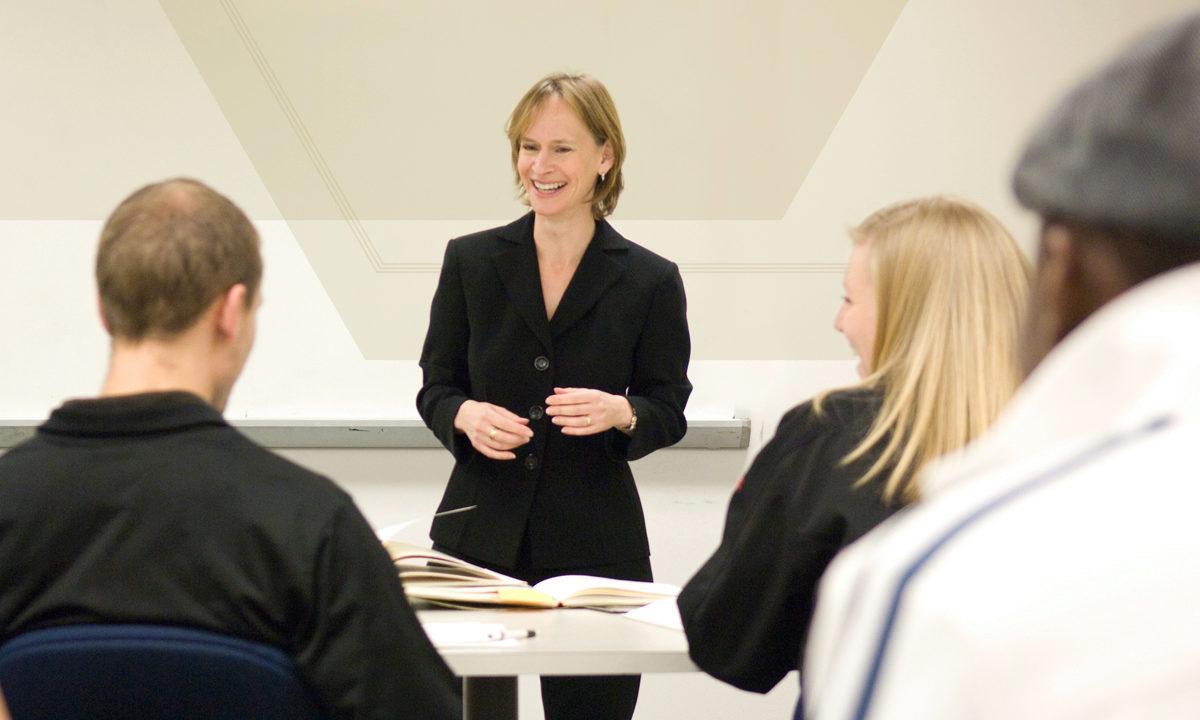How one program is producing engineers with strong communication skills

The ability to write and speak well when applying for grants, fellowships and industry jobs is critical for engineers – they need to be able to translate their technical knowledge into lay terms and promote their skill set. To meet this need, the Georgia Tech College of Engineering has incorporated an in-house communications model into its curriculum. Led by faculty formally trained in English, the model is tailored to fit the needs of students in each of the eight engineering schools. When students graduate, they are ready for success, regardless of the path they pursue.
The in-house communications program first began in 1990s when the graduate student population was rapidly increasing at Georgia Tech, and the need for better communication became necessary for success in academic institutions and industry alike. Since its inception, the goal of the in-house model has been to teach communication skills within the context of the engineering discipline through resources and workshops for grant writing and resume building.
Mechanical Engineering Leads the Way
The first School to implement the new model was Mechanical Engineering, developed by Jeffrey Donnell in 1990. Donnell was a recipient of the Marion L. Brittain Postdoctoral Fellowship which offered an opportunity for emerging scholars to develop innovative teaching in their roles as faculty members, and he leveraged it to build the program. Rather than offering communication classes as a part of the Literature department, they were embedded within the College’s classes to prepare students for their careers, providing an experiential learning methodology.
“By being embedded within the department, we can actually have some influence on the way classes and projects are designed to embrace writing,” said Donnell. “That small influence makes a big difference to the students.”

More Schools Come on Board
Shortly after the program was introduced in the School of Mechanical Engineering, Civil and Environmental Engineering (CEE) and Materials Science and Engineering (MSE) followed suit. Lisa Rosenstein developed both in-house programs in 1998 and directed both until 2014 when she moved to CEE full time to focus on the School’s growing program. Rosenstein believes that the College’s in-house model of teaching engineering communication is a “defining feature of a Georgia Tech engineering education.” She has even expanded the program to an international level by embedding communications instruction into the structural engineering courses in the CEE London Study Abroad program. She has received the most positive feedback from students like Aaron Bivins, who have started their careers and discovered the long-term benefits of these communication courses.
“The ability to synthesize complex technical material into succinct reports that were intelligible to non-engineers was a tremendous advantage,” said Aaron Bivins, PhD candidate, CEE. “I learned to place a premium on my ability to communicate both in writing and in oral presentations. With Dr. Rosenstein's help, I've won two nationally competitive fellowships -- the EPA STAR Graduate Research Fellowship and a Fulbright-Nehru Graduate Research Fellowship.”
Christina Bourgeois was brought onboard in May of 2000 to introduce the communications program to the School of Electrical and Computer Engineering (ECE). With a background in writing center administration, she took the initiative to put in place a physical communication studio where students could receive individualized instruction and assistance from trained ECE graduate teaching assistants, as they prepared documents, research posters, resumes, elevator pitches, and presentations.
“I want to create a culture of communication here in ECE,” said Bourgeois. “I want students to know that engineers are communicators and that communication is the X-factor—it’s what will set them apart and set them up for success.”
Bourgeois’ goal is to expose students to writing and communications from the minute they begin their first year at Tech, in order to help them develop a sense of confidence and comfort with everything from approaching professors about research opportunities to writing and presenting papers to attending their first career fairs.
“The techniques I've learned for crafting resumes, as well as presentations, will provide me with a capable template that will serve me well into my career,” said Quentin Truncale, an undergraduate in ECE. “Personally, this program has helped me maximize the impact of past internships, while also shaping what I expect to get out of future experiences.”
Although the communication programs are differentiated by discipline, they are conceptually the same and frequently collaborate to provide their students with the most advantageous experiences. The directors host joint workshops, most notably geared towards the National Science Foundation fellowship, and co-teach classes whenever possible.
For more than two decades, the in-house communications program has become deeply ingrained within almost every department of engineering at the College. And the directors and faculty have developed a unique system that allows students to cultivate their skills both inside and out of the classroom.
Several other Schools in the COE also have long-standing in-house engineering communications programs. The program in Chemical and Biomolecular Engineering (ChBE) is directed by Jacqueline Mohalley-Snedeker, and the program in Industrial and Systems Engineering (ISyE) is directed by Dr. Judith Norback. The new program director for MSE is Dr. Alena Alamgir.